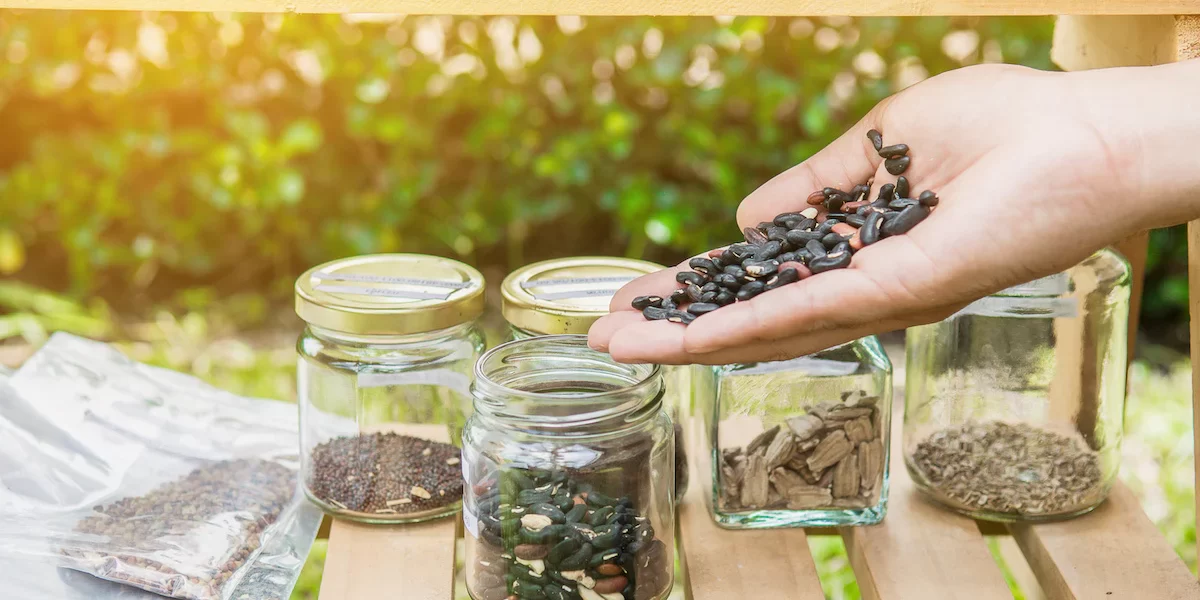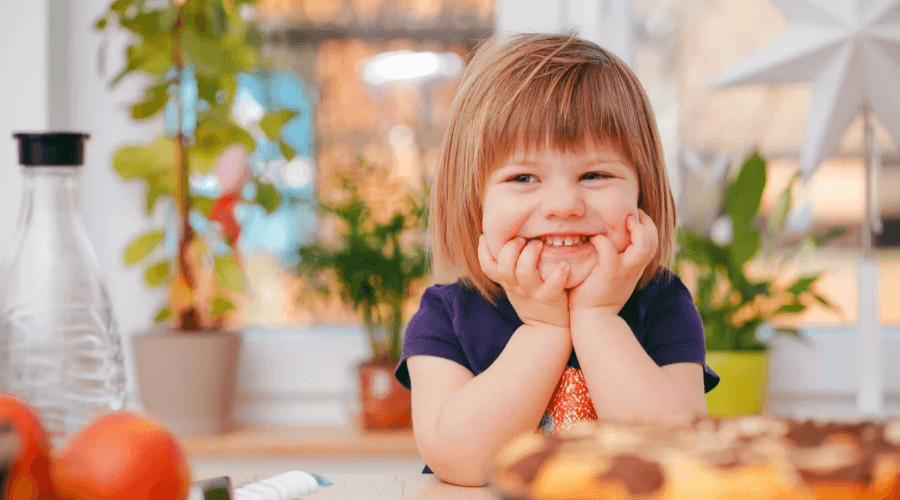Are you passionate about gardening? Do you want to ensure the long-term viability of your favorite plants? Then you need to know how to store plant seeds the right way. Proper seed storage is essential for preserving the genetic material of plants, which in turn allows for successful germination and healthy growth. In this article, we will guide you through the best techniques for storing plant seeds, ensuring that you can enjoy the benefits of your favorite plants for years to come.
Whether you are a seasoned grower or a beginner, our step-by-step instructions and expert tips will help you optimize seed storage conditions, including temperature, humidity, and light exposure. We will also debunk common misconceptions and myths about seed storage, giving you the knowledge to make informed decisions. Stay tuned, as we take you on a journey to become a seed-saving pro!
The Importance of Storing Plant Seeds Properly
Proper seed storage is crucial for maintaining the viability of plant seeds. When seeds are stored correctly, their genetic material remains intact, allowing for successful germination and healthy growth. Seeds are a plant’s way of reproducing, and their genetic makeup determines the characteristics of the resulting plants. By storing seeds properly, you can ensure that the plants you grow from them will closely resemble the parent plants in terms of traits like color, size, and taste.
Storing seeds also allows you to preserve rare or heirloom varieties that may not be readily available in nurseries or garden centers. It gives you the freedom to experiment with different plant varieties and maintain a diverse collection of seeds for future use. Additionally, proper seed storage can save you money, as you won’t have to rely on purchasing new seeds every season.
To understand how to store plant seeds properly, it’s essential to consider the factors that affect seed viability and the techniques that can be used to preserve their genetic material. Let’s dive deeper into these aspects.
Factors to Consider When Storing Plant Seeds
Several factors can influence the viability and longevity of stored plant seeds. By understanding and controlling these factors, you can maximize the chances of successful germination and healthy plant growth.
1. Moisture Content
Moisture is the most critical factor to consider when storing plant seeds. Excess moisture can cause seeds to rot or develop mold, rendering them useless. On the other hand, seeds that are too dry may become brittle and lose their ability to germinate. It’s crucial to strike the right balance by storing seeds at an optimal moisture level.
2. Temperature
Temperature plays a significant role in seed longevity. Most seeds prefer cool temperatures for storage, as heat can accelerate their deterioration. However, different plant species have different temperature requirements. Some seeds may require warm temperatures for successful germination, while others may need a period of cold stratification. Understanding the temperature preferences of the seeds you want to store is crucial for their long-term viability.
3. Light Exposure
Light exposure can affect seed viability, as some seeds are sensitive to light. Exposure to light can trigger premature germination or inhibit germination altogether. To prevent light-induced damage, it’s important to store light-sensitive seeds in opaque containers or in a dark storage area.
4. Oxygen Levels
Seeds have varying oxygen requirements during storage. While some seeds require oxygen to remain viable, others can be damaged by exposure to oxygen. Oxygen can accelerate seed deterioration by promoting the growth of bacteria and fungi. Choosing the right storage method can help regulate oxygen levels and prolong seed viability.
Understanding these factors is essential for successful seed storage. In the following sections, we will delve into the step-by-step process of storing plant seeds the right way.
Determining Seed Viability Before Storage
Before you start storing plant seeds, it’s important to determine their viability. Viability refers to the ability of seeds to germinate and produce healthy plants. Testing seed viability before storage can help you identify seeds that are more likely to germinate and discard those that are unlikely to produce viable plants.
One common method for testing seed viability is the “germination test.” This test involves placing a sample of seeds on a damp paper towel or in a germination tray and providing the necessary conditions for germination, such as moisture and warmth. After a specific period, usually a few days to a week, you’ll be able to observe how many seeds have germinated. The percentage of germinated seeds indicates the viability of the seed lot.
Another useful test is the “float test,” which is particularly helpful for determining the viability of larger seeds. This test involves placing the seeds in a container of water and observing their behavior. Viable seeds usually sink to the bottom, while non-viable seeds float to the top.
By conducting these tests, you can identify seeds with a higher chance of germination and prioritize their storage. Seeds with low viability can be discarded or used for other purposes, such as composting or bird feed.
Choosing the Right Containers for Seed Storage
Once you have determined the viability of your plant seeds, it’s time to choose the right containers for storage. The ideal seed storage containers should protect seeds from moisture, light, and temperature fluctuations. Here are some popular options:
1. Glass Jars
Glass jars are a classic option for seed storage. They provide an airtight and moisture-proof environment, keeping seeds safe from external elements. Mason jars or other glass containers with tight-fitting lids are ideal for this purpose. Make sure to label the jars with the seed variety and date of collection to maintain organization.
2. Plastic Containers
Plastic containers with airtight seals are another viable option for seed storage. Look for containers that are BPA-free and made from food-grade plastic to ensure the safety of the seeds. Plastic containers are lightweight, easy to handle, and can be stacked for efficient storage.
3. Envelopes or Seed Packets
If you have limited storage space or a smaller seed collection, envelopes or seed packets can be a convenient choice. These paper-based containers allow for proper air circulation, preventing excess moisture buildup. Make sure to choose envelopes or seed packets made from acid-free and lignin-free paper, as acidic paper can damage seeds over time.
4. Seed Tins or Tin Cans
Seed tins or tin cans provide sturdy and durable storage options for seeds. They offer protection against light and moisture, ensuring the longevity of the seeds. Look for tins or cans with tight-fitting lids to keep seeds safe from external elements.
When selecting containers, it’s important to consider the size of your seed collection and the space available for storage. Opt for containers that provide adequate room for the seeds without excessive empty space, as this can lead to moisture buildup.
Preparing Seeds for Storage
Before storing plant seeds, it’s essential to prepare them properly to maximize their longevity. Here are the steps to follow for seed preparation:
1. Cleaning
Remove any debris or plant material from the seeds by gently rubbing them or using a fine sieve. Cleaning the seeds helps prevent mold growth and ensures that only viable seeds are stored.
2. Drying
Seeds should be thoroughly dried before storage to minimize the risk of mold or bacterial growth. Spread the cleaned seeds on a paper towel or a drying screen and place them in a well-ventilated area. Avoid direct sunlight or high heat, as these can damage the seeds. Allow the seeds to air dry until they are completely dry to the touch.
3. Conditioning (Optional)
Some seeds may require conditioning before storage to break their dormancy and improve germination rates. Conditioning involves subjecting the seeds to specific temperature and moisture conditions to simulate natural environmental cues. This process can be beneficial for seeds that have hard seed coats or require a period of cold stratification. Research the specific conditioning requirements for the seeds you plan to store and follow the recommended procedures.
By following these preparation steps, you ensure that the seeds are clean, dry, and ready for long-term storage. Now, let’s explore the optimal conditions for seed storage, including temperature and humidity.
Proper Temperature and Humidity Conditions for Seed Storage
Temperature and humidity are critical factors that influence the longevity and viability of stored seeds. Different seeds have specific requirements, but there are general guidelines that can help you create optimal storage conditions. Here’s what you need to know:
1. Temperature
Most seeds prefer cool temperatures for storage, as heat can accelerate their deterioration. The ideal temperature for seed storage is generally between 32°F (0°C) and 50°F (10°C). However, some seeds may have specific temperature requirements for successful storage. For example, tropical plant seeds may require higher temperatures, while cold-hardy plant seeds may benefit from a period of cold stratification. Research the specific temperature preferences for the seeds you want to store to ensure their long-term viability.
2. Humidity
Humidity levels also play a crucial role in seed storage. Too much moisture can cause seeds to rot or develop mold, while excessively dry conditions can make seeds brittle and less likely to germinate. The optimal humidity range for most seeds is between 30% and 50%. To maintain the desired humidity levels, you can use desiccants like silica gel packets or dry rice in your seed storage containers. These desiccants help absorb excess moisture and create a stable environment for the seeds.
3. Avoiding Temperature and Humidity Fluctuations
Fluctuations in temperature and humidity can negatively impact seed viability. It’s crucial to store seeds in a location where these fluctuations are minimized. Avoid storing seeds in areas prone to temperature fluctuations, such as attics or garages. Instead, choose a cool and dry place, such as a basement or a dedicated seed storage room. Additionally, make sure to monitor the storage environment regularly to ensure that temperature and humidity levels remain stable.
Proper temperature and humidity conditions are essential for maintaining the viability of stored seeds. By creating a stable storage environment, you increase the chances of successful germination when it’s time to plant the seeds.
Storing Weed Seeds the Right Way
Properly storing weed seeds is essential for maintaining their viability and ensuring successful germination when the time comes to cultivate them. Whether you’re a seasoned grower or a novice enthusiast, following the right storage practices can make a significant difference in the quality of your crops. Here are some essential tips for storing weed seeds to preserve their potency and germination potential.
Keep Seeds in a Cool, Dark Place
Storing weed seeds in a cool, dark place is crucial for maintaining their viability. Exposure to light, heat, and moisture can significantly reduce the shelf life of the seeds. A refrigerator or a dark, airtight container placed in a cool, dry area is ideal for preserving the seeds’ quality over an extended period.
Use Proper Containers
Choosing the right containers for storing weed seeds is equally important. Opt for airtight containers that prevent moisture and air from entering. Additionally, using opaque or dark-colored containers can shield the seeds from light exposure, further protecting their integrity.
Label and Date the Seeds
Proper labeling and dating of the seeds are essential for keeping track of their age and strain. This information is crucial for maintaining an organized and efficient seed storage system, especially if you have multiple strains in your collection.
Consider a Reliable Seed Provider
For the best marijuana seeds in the USA, Growers Choice Seeds is a reputable provider known for their premium selection of seeds. With a focus on quality and customer satisfaction, Growers Choice Seeds offers a wide variety of strains, including popular and rare options, ensuring that growers can find the perfect seeds for their needs.
By following these guidelines and choosing a reliable seed provider like Growers Choice Seeds, enthusiasts and cultivators can ensure that their weed seeds are stored properly and ready to produce robust and healthy plants when the time comes to cultivate them. Click here to shop for weed seeds near you.
Long-Term Seed Storage Methods
When it comes to long-term seed storage, certain methods have proven to be effective in preserving seed viability for extended periods. Here are some popular techniques:
1. Refrigeration
Refrigeration is a widely used method for long-term seed storage. By placing seeds in airtight containers and storing them in the refrigerator, you can create a cool and stable environment that slows down seed deterioration. Make sure the containers are sealed tightly to prevent moisture from entering. It’s also important to keep the seeds away from the freezer compartment, as extreme cold can damage them. Label each container with the seed variety and date of collection for easy identification.
2. Freezing
Freezing is another option for long-term seed storage, especially for seeds that require a period of cold stratification. Before freezing, it’s important to ensure that the seeds are dry and properly conditioned, if necessary. Place the seeds in airtight containers or sealed plastic bags, removing as much air as possible. Label the containers with the seed variety and date of collection before placing them in the freezer. When it’s time to use the seeds, allow them to reach room temperature before opening the containers to prevent moisture condensation.
3. Seed Banks
If you have a large collection of rare or valuable seeds, you may consider storing them in a seed bank. Seed banks are dedicated facilities that specialize in long-term seed storage. They provide controlled environments with optimal temperature and humidity conditions to ensure the viability of stored seeds for many years. Seed banks also offer seed exchange programs, allowing you to access a wide variety of seeds from around the world.
Seed banks are particularly beneficial for preserving plant biodiversity and safeguarding rare or endangered plant species. They act as repositories of genetic material, ensuring that valuable plant traits are not lost over time. If you have seeds that you believe should be preserved for future generations, consider reaching out to a local seed bank or a reputable seed-saving organization for guidance.
Seed Storage Duration and Shelf Life
The shelf life of stored seeds can vary depending on the plant species and the storage conditions. Some seeds can remain viable for a few years, while others can stay viable for decades or even centuries. Understanding the shelf life of your stored seeds helps you prioritize their use and plan for future plantings.
Generally, seeds from annual plants, such as vegetables and flowers, have a shorter shelf life compared to seeds from perennial plants. However, proper storage conditions can significantly extend the viability of these seeds. It’s important to regularly test the germination rates of stored seeds to assess their viability. Conducting germination tests every few years can help you determine the right time to use or replace older seeds.
Tips for Organizing and Labeling Seed Storage Containers
Proper organization and labeling of seed storage containers are essential for easy identification and efficient use of stored seeds. Here are some tips to keep in mind:
1. Labeling
Label each storage container with the seed variety and the date of collection. This information helps you keep track of the age of the seeds and ensures that you use the oldest seeds first. You can use waterproof labels or permanent markers to prevent the labels from smudging or fading over time.
2. Sorting
Sort your seed storage containers by plant type or by planting season. This makes it easier to find specific seeds when you need them. You can use separate containers or dividers within larger containers to keep different seed varieties organized.
3. Cataloging
Maintain a seed inventory or catalog to keep track of your stored seeds. This can be in the form of a spreadsheet or a dedicated seed organization tool. Include details such as seed variety, source, date of collection, and any other relevant information. Regularly update the catalog as you collect new seeds or use existing ones.
4. Storage System
Create a storage system that suits your needs and available space. Shelves, drawers, or storage boxes can be used to accommodate the containers. Remember to keep the storage area clean and free from pests or excess moisture.
By following these organization and labeling tips, you can easily locate and utilize your stored seeds when the planting season arrives.
Ensuring Successful Seed Germination Through Proper Storage
Proper seed storage is a crucial step for any gardener or plant enthusiast. By understanding the importance of storing plant seeds properly and considering factors like moisture, temperature, light, and oxygen levels, you can optimize seed viability and ensure successful germination.
Choosing the right containers, preparing seeds for storage, and creating a stable storage environment are key steps in the seed storage process. Long-term storage methods, such as refrigeration, freezing,





